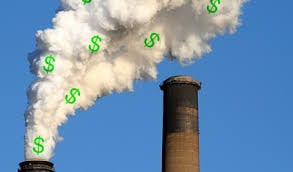This issue of Cedex® Update starts with a graph of recent spot wholesale prices, showing that by the end of July the cost of emissions had been well and truly removed.

Reflecting the delays in passing the legislation, the price drop occurred gradually over the month, even though liability to pay the carbon price ended on 30 June. In Queensland, the eventual price fall of about $27 per MWh exceeded the average cost of carbon (about $23/MWh) of the state’s mix of coal and gas fuelled generators.
Two particular factors contributed: gas generators increased their output, taking advantage of access, in the short term, to cheap gas (so-called ramp gas, discussed in a previous Cedex® Update); and rooftop PV provided strong competition in the middle of sunny Queensland winter days. Spot prices in the middle of the day dropped under $20 per MWh, which is well below the break even cost of generation using either coal or gas.
The price drop in SA also appears to exceed the carbon cost (about $18/MWh), which was lower than in the mainland eastern states, because of the large shares of gas and wind generation in total SA supply.


July also saw the first increase in annualised NEM demand for electricity since March 2013 and the first significant increase in annualised generation emissions since October 2011 (Figure 2). Demand increased in all states except Victoria; and also in WA up to the end of June (Figure 3). The increases certainly cannot be attributed to the direct experience of lower prices; very few consumers would have seen bills with lower prices by the end of July.
It is possible that some consumers may have increased consumption in the expectation that electricity would be cheaper; alternatively, colder than average winter temperatures may have been a factor. The data needed to test these, and other possible causes, are not yet available.


On the supply side (Figure 4), hydro generation fell, as expected, with the removal of the carbon price and black coal generation also fell. Gas, wind and brown coal all increased their output. In terms of shares of the slightly increased supply volume, coal as a whole decreased by a small amount, to a new low of 72.9%, as did hydro, while both gas and wind increased their shares.
The share of annual supply from wind generation reached 4.9% in the year to July, which was a record, as was the total annual output of 8.8TWh. Output for the month was 1.02 TWh, equivalent to 6.2% of total generation, which was second only to August 2013. Three new wind farms – Gullen Range in NSW, Mt. Mercer in Victoria and Snowtown South in SA – have started operating since the beginning of this year, meaning that August and/or September, usually the windiest months of the year in south east Australia, are likely to see wind generation reach new record levels.
With the carbon price having ended and report of the RET Review expected in the next few weeks, it is timely to assess the contribution of the various drivers to the fall in electricity generation emissions since the peak reached in the year ending December 2008.
The fall in emissions since then has been 18%, all resulting from the decrease in coal fired generation, making for a relatively simple calculation. Reduced demand has contributed 49% of the total emissions reduction, increased hydro and increased wind each 19%, and increased gas generation 9%. The remaining 4% is attributable to increases in the average thermal efficiency of coal fired generation, as older, less efficient generators have lost market share or been withdrawn from operation altogether.
These changes in demand and generation mix are the result of the RET (in its various forms), other pro-solar factors like falling costs and feed-in tariffs, higher retail prices, energy efficiency policies and the carbon price. Many of these policy, technological and consumer demand factors remain highly dynamic.
Source: Carbon Emissions Index. Reproduced with permission.








